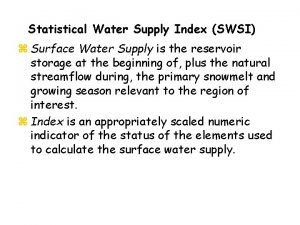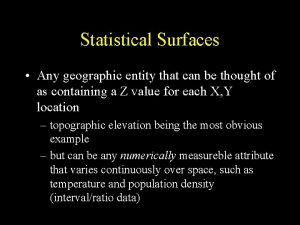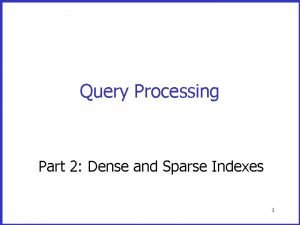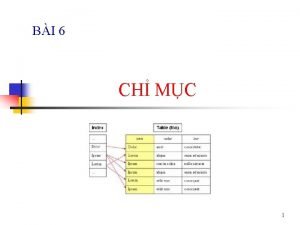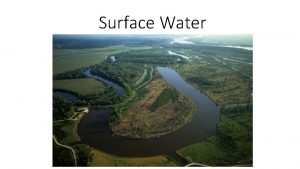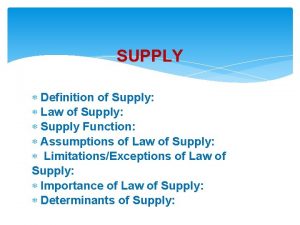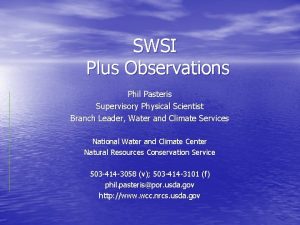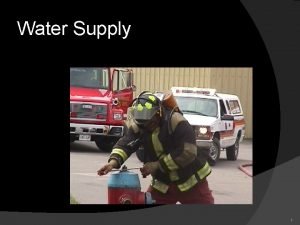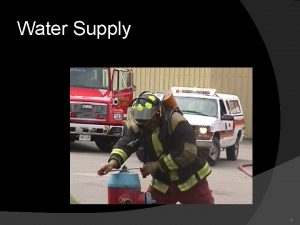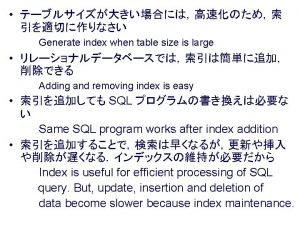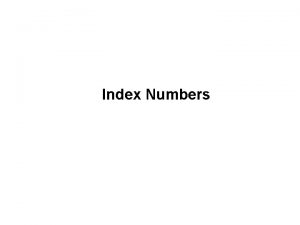Statistical Water Supply Index SWSI z Surface Water














- Slides: 14

Statistical Water Supply Index (SWSI) z Surface Water Supply is the reservoir storage at the beginning of, plus the natural streamflow during, the primary snowmelt and growing season relevant to the region of interest. z Index is an appropriately scaled numeric indicator of the status of the elements used to calculate the surface water supply.

History of Statistical Water Supply Index (SWSI) z Originally developed in early 1980 s in Colorado z Original formulation, with variations, also adopted by Montana and Oregon z Procedure reviewed by NRCS in cooperation with Colorado Climate Center in early 1990 s z Revised formulation based on water supply forecasts published in 1993 z New formulation, with variations, adopted by Idaho, New Mexico, and Colorado

Original Formulation of SWSI where: P = nonexceedance probability (%) of respective hydrologic variable a, b, c, d = subjective weights

Limitations of Original Formulation of SWSI n n n Statistical properties of the combination of non-exceedance probabilities are not known Subjective weights No explicit definition of surface water supply

Revised Formulation of SWSI where: P = non-exceedance probability (%) of reservoir storage + observed or forecasted streamflow (season dependent) 50 = centers the distribution on zero 12 = scales to existing ranges for drought existing indexes

Streamflow Variable Used in Revised Formulation of SWSI z Streamflow forecast is used when available, otherwise use previous month's streamflow as alternate. z Official streamflow forecasts are available January - May or June z Forecasts during summer and fall months should be possible in areas with significant ENSO signal and/or relationship with previous month's precipitation

Example Monthly Formulation - CO z Oct-Nov: Obs. Res. Storage + Obs. Streamflow z Dec: Obs. Res. Storage + Apr-Jul / Sep volume based on Dec 1 SWE / SOI as relevant z Jan-Apr: Obs. Res. Storage + Apr-Jul /Sep volume forecasts

Example Monthly Formulation - CO z May: Obs. Res. Storage + Apr-Jul / Sep volume forecasts - Apr runoff z Jun: Obs. Res. Storage + Apr-Jul / Sep volume forecasts - (Apr-May) runoff z Jul-Sep: Obs. Res. Storage + previous month’s obs. Streamflow

Current SWSI Implementation

Additional Considerations z Data Sources: Precipitation, snowpack, streamflow, reservoir storage. z Centralized / De-Centralized computation z Actual spatial representation: Entire basin / “ribbon” along the river z Presentation: Graphic / Tabular




Proposed Initial Selections z Climate - UCAN z Streamflow - NWIS z De-Centralized --> Centralized z River-Ribbon presentation z Graphic and Tabular
 Surface water supply index
Surface water supply index Water and water and water water
Water and water and water water A statistical surface has a
A statistical surface has a Diff between step index and graded index fiber
Diff between step index and graded index fiber Primary index is dense or sparse
Primary index is dense or sparse Lepromin test ppt
Lepromin test ppt Physical quality of life index and human development index
Physical quality of life index and human development index Optical fiber waveguide
Optical fiber waveguide Simpson's diversity index table
Simpson's diversity index table Index of consistency
Index of consistency Clustered index và non clustered index
Clustered index và non clustered index Perfect order index supply chain
Perfect order index supply chain Chapter 5 section 1 supply and the law of supply
Chapter 5 section 1 supply and the law of supply Elastisidad ng supply
Elastisidad ng supply Matching supply with demand
Matching supply with demand
